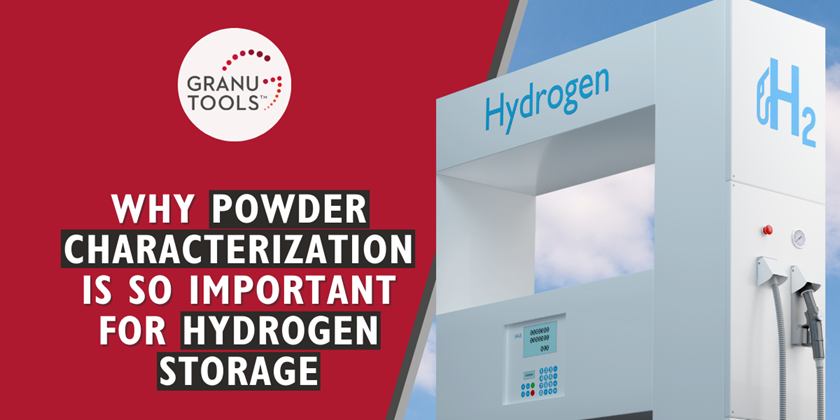
Blog
Why powder characterization is so important for hydrogen storage
In this study, we put the emphasis on why powder characterization is needed to solve unwanted granular phenomena of the material that stores hydrogen.
Hydrogen storage in powder material
Hydrogen storage is considered an interesting alternative to batteries for storing energy. Recently, instead of storing hydrogen in liquid or gaseous form or by chemical reaction with a host molecule, hydrogen storage by absorption in powder material is an interesting new method. Its low operating pressure and temperature allow to use this technique in specific applications that are incompatible with other methods. However, the presence of powder in the process brings new problems that need to be solved.
Powder characterization will improve powder hydrogen storage
The powders used in the vessel for hydrogen storage are generally made of complex metallic compounds. During the successive cycling of hydrogen absorption/desorption, these powders generally undergo variations in pressure, in temperature and the material itself can undergo a phase transition due to the absorption of hydrogen inside the interstitial void of the crystalline structure of the metal alloy. These variations induce large changes in the properties of the powder due to changes in particle properties (friction coefficient, coefficient of restitution, particle size…).
These changes are particularly important since most powders undergo large variations in volume up to 40% increase. Indeed, due to hydrogen absorption, the grains are dilated and the vessel should be able to sustain this large volume variation. The grains need to move to optimize the packing of the powder inside the vessel to reduce the pressure applied to the wall. This requires low friction between the grains and good flowability of the powder. In addition, grain decrepitation (fragmentation of the grains due to the cycle absorption/desorption) observed for these metallic powders broadens the particle size distribution. As a result, granular segregation takes place in such a system and is responsible for an asymmetric deformation of the vessel after a few cycles in many cases.
Such typical phenomena like packing, granular segregation, or flowability are inherent to powder materials and are important to control for the good working of the hydrogen storage process. Therefore, it is really important to characterize the powder properties such as its flowability, its packing, or its ability to build up electrostatic charge to solve problems that can be encountered in the hydrogen storage process due to the granular nature of the metallic alloy powders.
Conclusion
Hydrogen storage in powder materials is a promising method to store energy for green transition. Indeed, the working conditions of this new method allow to use it for mobility, solar energy storage in houses, and many other small units for which produced energy should be stored to fight energy waste and cannot be done by other methods.
Therefore, hydrogen storage in powder fills a gap in the global energy storage approach and will highly participate in the global reduction of fossil energy consumption to fight global warming. Contrary to other hydrogen storage methods, some issues in the process come from the powder form of the material that stores the hydrogen. Consequently, powder characterization is needed to solve unwanted granular phenomena.
The different instruments of Granutools provide an accurate and adequate characterization of the behaviours of a powder (flowability, bulk density, packing dynamic, tribocharging), useful to solve or to understand these phenomena for hydrogen storage process improvement.
